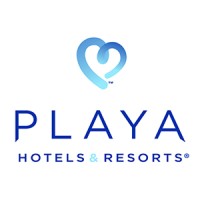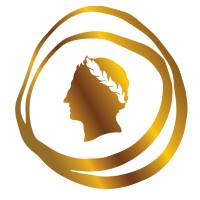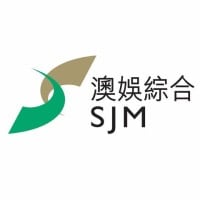
Minor Hotels Europe and Americas Company Cyber Security Posture
successfactors.euMinor Hotels is a global hospitality leader with a network of more than 560 hotels across six continents. We drive growth through eight diverse hotel brands and a portfolio of related hospitality businesses. Perpetually driven by an entrepreneurial spirit, we create better brands, businesses and partnerships by always focusing on what matters most to our guests, team members and partners. Our eight diverse hotel brands – Anantara, Avani, Elewana, NH, NH Collection, nhow, Oaks and Tivoli – bringing our guests to the most desirable hotel and resort destinations around the world. We also own a collection of related hospitality businesses, including luxury residences, private jets, restaurants and bars, spa and wellness, and river cruises and rail journeys. #MinorHotels
MHEA Company Details
nh-hotel-group
10223 employees
502972.0
721
Hospitality
successfactors.eu
Scan still pending
MIN_1761915
In-progress
Between 900 and 1000
This score is AI-generated and less favored by cyber insurers, who prefer the TPRM score.
 MHEA Global Score
MHEA Global Score.png)

Minor Hotels Europe and Americas Company Scoring based on AI Models
| Model Name | Date | Description | Current Score Difference | Score |
|---|---|---|---|---|
| AVERAGE-Industry | 03-12-2025 | This score represents the average cybersecurity rating of companies already scanned within the same industry. It provides a benchmark to compare an individual company's security posture against its industry peers. | N/A | Between 900 and 1000 |
Minor Hotels Europe and Americas Company Cyber Security News & History
| Entity | Type | Severity | Impact | Seen | Url ID | Details | View |
|---|
Minor Hotels Europe and Americas Company Subsidiaries

Minor Hotels is a global hospitality leader with a network of more than 560 hotels across six continents. We drive growth through eight diverse hotel brands and a portfolio of related hospitality businesses. Perpetually driven by an entrepreneurial spirit, we create better brands, businesses and partnerships by always focusing on what matters most to our guests, team members and partners. Our eight diverse hotel brands – Anantara, Avani, Elewana, NH, NH Collection, nhow, Oaks and Tivoli – bringing our guests to the most desirable hotel and resort destinations around the world. We also own a collection of related hospitality businesses, including luxury residences, private jets, restaurants and bars, spa and wellness, and river cruises and rail journeys. #MinorHotels
Access Data Using Our API

Get company history
.png)
MHEA Cyber Security News
Minor Hotels lays foundations for a purely digital future
The hotel sector has been undergoing a digital revolution for years, transforming not only the way hotels operate and interact with their ...
Bold Deal Turns Out To Be Major Boon For Bill Heinecke’s Minor International
Heinecke gave up the CEO role at Minor International almost five years ago, but he remains the driving force behind its worldwide ambitions in ...
Minor Hotels and dnata Travel Group Enhance Partnership to Elevate Plans for Global Growth
Minor Hotels, an international hotel owner, operator and investor with more than 540 hotels in 56 countries in Asia Pacific, the Middle East ...
Minor Hotels moves to cloud for efficient property management - Digital Transformation - Cloud
Minor Hotels already uses Oracle MICROS Simphony Cloud Point-of-Sale (POS) solution in select hotel restaurants and bars. MacDonald said, these ...
Minor Hotels Announces Partnership with Tourism Development Fund of Saudi Arabia to Develop Unique Hospitality and Lifestyle Projects
Minor Hotels will act as an operator and partner in each of the projects, which are expected to become distinct destinations in their respective locations.
Minor Hotel Group Readies For A Major Push In North America
Minor Hotel Group is making a major expansion push that will see the Bangkok-based hotel owner, operator and management company expand in Europe ...
Anantara announces new luxury resort and residences in Sharjah, UAE
The upcoming Anantara Sharjah Resort marks the latest addition to Minor Hotels' growing portfolio in the Middle East.
NH Hotel Group Offers Free Medical Assistance In All Its Spanish Hotels
NH Hotel Group, part of Minor Hotels, is an established multinational hotel operator and a benchmark urban hotel chain in Europe and the ...
PwC: Increasing economic headwinds to impact hotel performance for balance of this year and into 2024
Despite worries of recession, bank failures, and a liquidity crisis affecting the macroeconomy, US hotels continue to outperform ...

MHEA Similar Companies

Playa Hotels & Resorts
Playa Hotels & Resorts N.V. (NASDAQ: PLYA, "Playa") is a leading owner, operator and developer of all-inclusive resorts in prime beachfront locations in Mexico, Jamaica and the Dominican Republic. Playa currently owns and/or manages a total portfolio consisting of 20+ resorts under the following bra

Kempinski Hotels
Founded in Germany in 1897, Kempinski Hotels has long reflected the finest traditions of European hospitality. Today, as ever, Kempinski is synonymous with distinctive luxury. Located in many of the world's most well-known cities and resorts, the Kempinski collection includes hotels in a grand mann

Caesars Entertainment
Caesars Entertainment, Inc. is the largest casino-entertainment Company in the U.S. and one of the world's most diversified casino-entertainment providers. Since its beginning in Reno, NV, in 1937, Caesars Entertainment, Inc. has grown through development of new resorts, expansions and acquisitions.

Caesars Entertainment
Caesars Entertainment, Inc. is the largest casino-entertainment Company in the U.S. and one of the world's most diversified casino-entertainment providers. Since its beginning in Reno, NV, in 1937, Caesars Entertainment, Inc. has grown through development of new resorts, expansions and acquisitions.

SJM Resorts
SJM Resorts, S.A. ("SJM") is one of the six concessionaires in Macau, authorised by the Government of the Macau Special Administrative Region to operate casinos and gaming areas. SJM is also the only casino gaming concessionaire with its roots in Macau. SJM owns and operates the Grand Lisboa Palace

Carlson Hotels "Park Plaza, Chandigarh
A full-service, upper midscale hotel brand for business and leisure travelers, Park Plaza® offers award-winning meeting facilities and staff who live the brand’s value proposition by going out of their way to show their appreciation to their guests. Park Plaza® hotels are located in city centers

Frequently Asked Questions
Explore insights on cybersecurity incidents, risk posture, and Rankiteo's assessments.
MHEA CyberSecurity History Information
How many cyber incidents has MHEA faced?
Total Incidents: According to Rankiteo, MHEA has faced 0 incidents in the past.
What types of cybersecurity incidents have occurred at MHEA?
Incident Types: The types of cybersecurity incidents that have occurred include .
Incident Details
What are the most common types of attacks the company has faced?
Additional Questions
What Do We Measure?
















Every week, Rankiteo analyzes billions of signals to give organizations a sharper, faster view of emerging risks. With deeper, more actionable intelligence at their fingertips, security teams can outpace threat actors, respond instantly to Zero-Day attacks, and dramatically shrink their risk exposure window.
These are some of the factors we use to calculate the overall score:
Identify exposed access points, detect misconfigured SSL certificates, and uncover vulnerabilities across the network infrastructure.
Gain visibility into the software components used within an organization to detect vulnerabilities, manage risk, and ensure supply chain security.
Monitor and manage all IT assets and their configurations to ensure accurate, real-time visibility across the company's technology environment.
Leverage real-time insights on active threats, malware campaigns, and emerging vulnerabilities to proactively defend against evolving cyberattacks.




